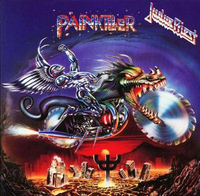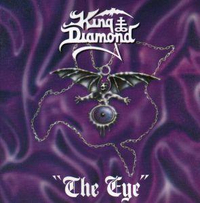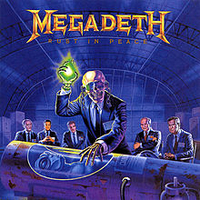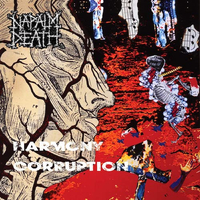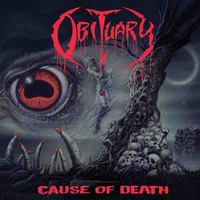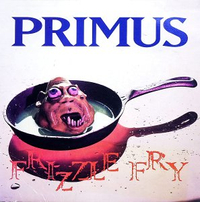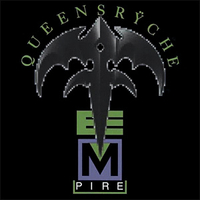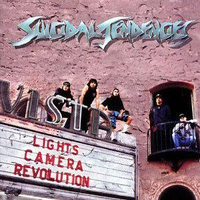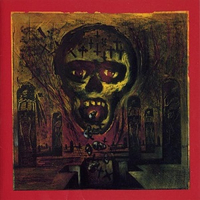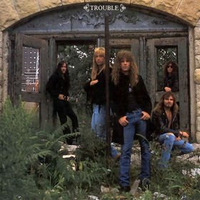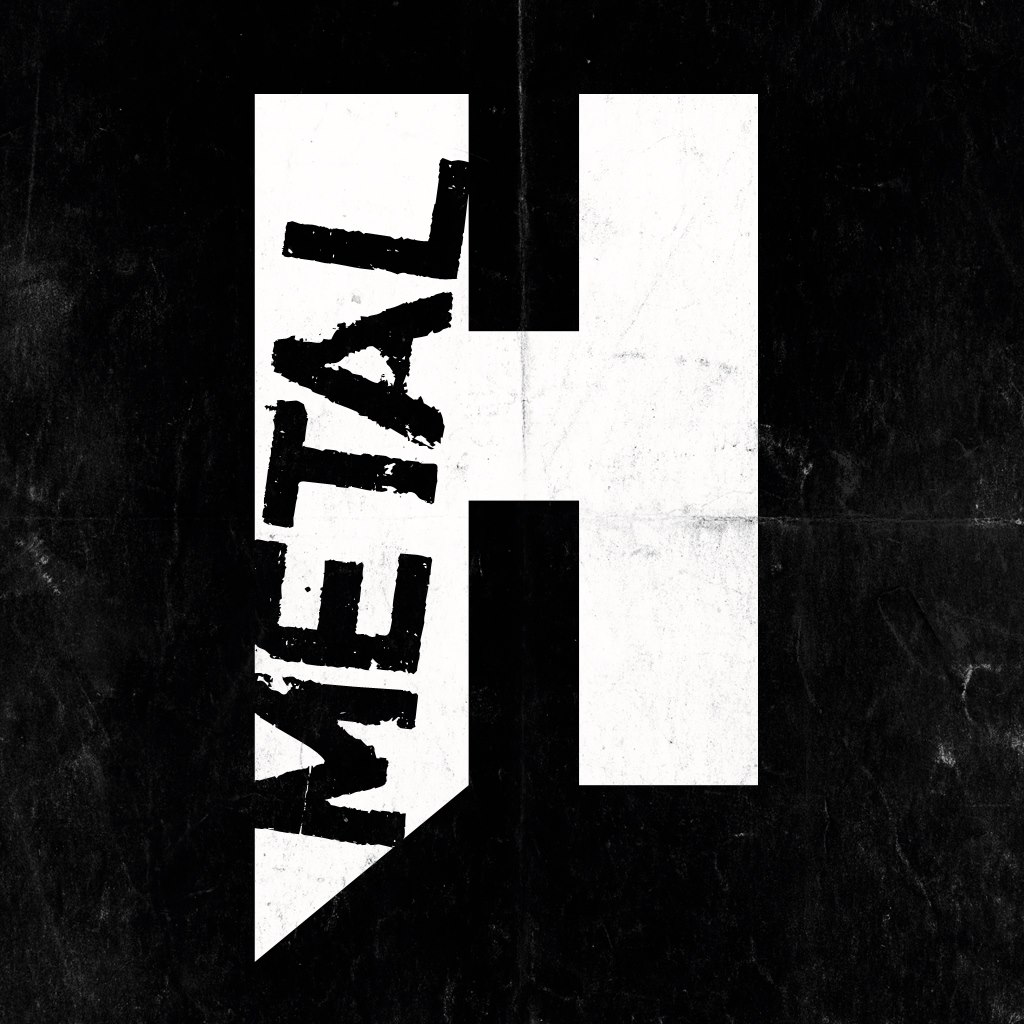Judas Priest - Painkiller
The end of Rob Halford’s first period as Judas Priest frontman arrived shortly after the release of one of their greatest albums. Painkiller rips from start to finish and single-handedly redefined the sound of traditional heavy metal in the process. There are literally hundreds of bands out there peddling this exact same sound, but no one will ever top the original. And that title track… holy fucking shit.
King Diamond – The Eye
With a slightly heavier but warmer sound, King Diamond entered the 90s with another tour-de-force of thunderous shlock. Perhaps less conceptually focused than its three immediate predecessors (Abigail, “Them” and Conspiracy), The Eye recounted hazy tales of atrocities committed in the name of the Christian god, with nuns doing particularly badly out of the whole enterprise, via organ-embellished metal monoliths like ageless opener Eye Of The Witch and the blistering Burn.
Megadeth - Rust In Peace
Something magical happened when core Megadeth duo Dave Mustaine and David Ellefson joined forces with guitarist Marty Friedman and drummer Nick Menza. Rust In Peace is one of those albums: a masterpiece with no obvious flaws, not an ounce of filler or flab and some of the most obscenely thrilling moments in all of recorded metal history. Holy Wars… The Punishment Due, Hangar 18 and Tornado Of Souls may be the obvious highlights, but the entire record still leaps from the speakers 26 years later, sounding supremely arrogant and startlingly powerful. But beyond its hallowed contents, Rust In Peace is a seminal work because it completely upgraded metal’s sonic vocabulary, heroically raising levels of precision, technicality and compositional suss and kick-starting the ‘90s with a sustained blast of immaculate, state-of-the-art savagery that continues to send shockwaves through the metal world today.
Napalm Death – Harmony Corruption
Grindcore pioneers Napalm Death redrew the boundaries of musical extremity with their first two albums, Scum and From Enslavement To Obliteration. For follow-up Harmony Corruption – their first with new singer Mark ‘Barney’ Greenway and US guitarists Mitch Harris and Jesse Pintado - they consciously stepped out of the sonic arms race they themselves had instigated, dialling back the hyperspeed wall of noise on which their infamy was built in favour of a slower, grimier, marginally more measured approach that fell in step with the death metal scene that had crawled out of the backwaters of Florida and New York. But slower BPMs and longer songs didn’t mean Napalm had sold out – The Chains That Bind Us and the immortal Suffer The Children remain as invigoratingly uncompromising as anything they recorded before or since.
Obituary Cause Of Death
The undisputed daddies of caveman death metal somehow managed to outstrip their genre-defining Slowly We Rot debut second time around. Aside from containing Obituary’s biggest, er, hit – the indelible Chopped In Half – Cause Of Death remains one of the most crushing and grim death metal albums of all time. It’s mainly mid-paced, but it’s merciless.
Primus – Frizzle Fry
Although preceded by Suck On This, a live album that included several of Frizzle Fry’s tunes in more raucous form, this, their debut proper is where Primus truly set out their stall.
With Les Claypool’s percussive bass lines front and centre, and drummer Tim Alexander’s loose-limbed loops propelling everything along, this could have been little more than an off-kilter muso-fest. But thanks to Primus’s subtle touches – guitarist Larry Lalonde’s squawks and clangs, Claypool’s lysergic poetry – Frizzle Fry oozed colour, warmth and a shitload of singalong gems such as John The Fisherman and the unhinged Too Many Puppies.
Queensrÿche - Empire
For Queensrÿche, the prospect of following the immense success of 1988’s prog metal masterpiece Operation: Mindcrime must have given them an almighty headache. But it’s a testament to both their mettle and metal that they came close to eclipsing that album with this musical feat.
Arguably more progressive than its predecessor, Empire perfectly encapsulated what the band were about as the 90s began. From the thunderous title track, with its direct attack on the US government, through to the pop-metal inclination of Jet City Women, to the gentle flow of the smash hit ballad Silent Lucidity, Empire was evidence of a class band at the top of their game, there’s Little wonder it’s Queensrÿche’s biggest selling album.
Suicidal Tendencies – Lights Camera Revolution
Not content with mastering punk rock and thrash metal, Suicidal Tendencies’ ethos of “anything goes” enabled them to be at the front of the queue when metal started dabbling in funkier waters. Alongside the genre-bending likes of Faith No More, Red Hot Chili Peppers and Living Colour, ST mainman Mike Muir and co. chucked slap bass into the mix for 1990’s hugely successful Lights… Camera… Revolution! and delivered one of funk metal’s sharpest anthems in the shape of the evangelist-baiting Send Me Your Money in the process. And the bassist driving that sound? None other than future Metallica four-stringer Rob Trujillo.
Slayer - Seasons In The Abyss
The last studio album for drummer Dave Lombardo, until 2006, and while it offered no discernible change in direction from what had gone before, Slayer’s strength of vision was clear on Dead Skin Mask and War Ensemble.
Many believed that Seasons In The Abyss was the sound of a band stuck in a rut. However, this was actually a band in a groove, knowing precisely what they should be doing, and how to deliver it.
Warfare is a recurring theme in Slayer songs, and Hallowed Point, Expendable Youth and the opening blitzkrieg War Ensemble all resonated powerfully at a time when US forces were engaged in the first Gulf War. Equally morbid were Dead Skin Mask and the title track, although the latter had some diehard fans crying ‘sell-out’. Not that anyone would have said that to Kerry King’s face.
At a time when some were saying thrash was dead, Slayer were still brimming with ideas.
Trouble - Trouble
Second-wave doom icons Trouble spent much of the 80s on the verge of becoming metal’s next big thing, only to trip over their shoelaces at every opportunity. When the Chicagoans hooked up with Def American supremo and producer-of-the-moment Rick Rubin for 1990’s self-titled fourth album, it looked like all bets were off.
Trouble certainly was a mighty work, piling on the riffs and amplifying singer Eric Wagner’s distinctive post-Ozzy screech to magnificent levels. And in At The End Of My Daze and Psychotic Reaction, they served up psych-tinged anthems that stood shoulder to shoulder with anything that came before or after.
Sadly, even Rubin’s magic dust couldn’t elevate the band to superstar levels – landing between hair metal‘s last hurrah and the incoming avalanche of grunge, Trouble never reached the audience it - or the band that made it – deserved.
Metal Hammer Newsletter
Sign up below to get the latest from Metal Hammer, plus exclusive special offers, direct to your inbox!
